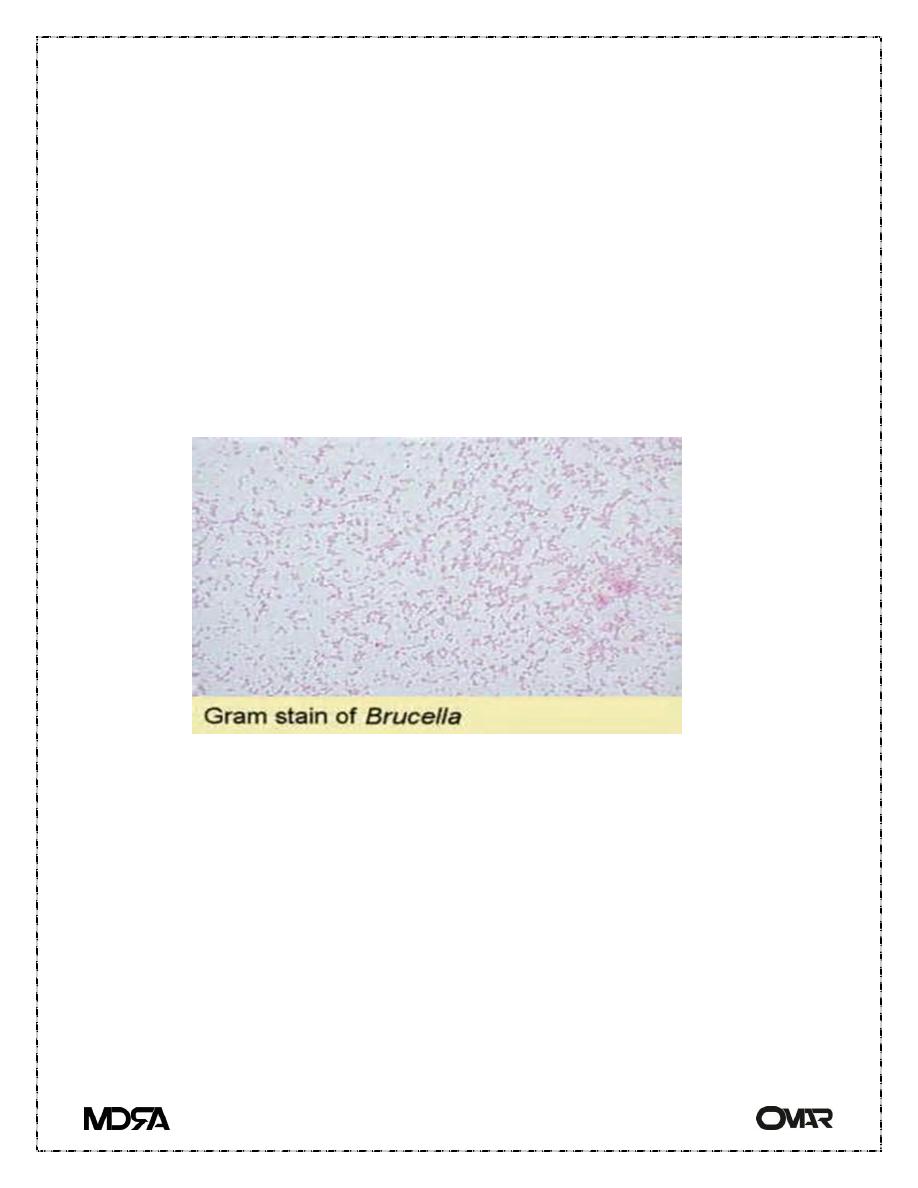
1
Brucella
• Brucella is a genus of Gram-negative bacteria. They are small
(0.5 to 0.7 by 0.6 to 1.5 µm), non-encapsulated, flagellated.
facultatively intracellular coccobacilli.
• Brucella is the cause of brucellosis, which is a zoonosis. It is
transmitted by ingesting contaminated food (such as
unpasteurized milk products), direct contact with an infected
animal. Transmission from human to human, Minimum
infectious exposure is between 10 - 100 organisms.
Species
• B. abortus
• B. canis
• B. ceti
• B. inopinata
• B. melitensis
• B. microti
• B. neotomae
• B. ovis
• B. pinnipedialis
• B. suis
Characteristics
• Brucella species are small, Gram-negative, facultative
coccobacilli, most lacking a capsule, endospores, or native
plasmids. They are intracellular within the host organism, and

2
show environmental persistence outside the host. They survive
extremes in temperature, pH, and humidity, and is frozen and
aborted materials. They infect many species, but with some
specificity.
Transmission
• Zoonosis affecting domestic animals is caused by contact with
milk, urine, and genital organs, which concentrate the causative
organisms. In humans, the disease is acquired from
unpasteurised milk and products or undercooked meat
(consumers), laboratory inhalation (lab workers), accidental
skin penetration or abrasion (farmers, slaughterhouse workers,
and veterinarians) and (rarely) conjunctival contact, blood
transfusion, transplacental, and person to person
Diagnosis
• Brucella is isolated from a blood culture on Castaneda medium
or from bone marrow. Prolonged incubation (up to six weeks)
may be required, as they are slow-growing, but on modern
automated machines, the cultures often show positive results
within seven days. On Gram stain, they appear as dense clumps
of Gram-negative coccobacilli and are exceedingly difficult to
see. In recent years, molecular diagnostic techniques based on
the genetic component of the pathogen have become more
popular.

3
Treatment
• No clinical trials exist to be relied on as a guide for optimal
treatment, but an at least six-week course of rifampicin or
gentamicin and doxycycline twice daily is the combination most
often used, and appears to be efficacious. the advantage of this
regimen is that it is oral medication with no injections; however,
a high rate of side effects (nausea, vomiting, loss of appetite)
has also been reported.
